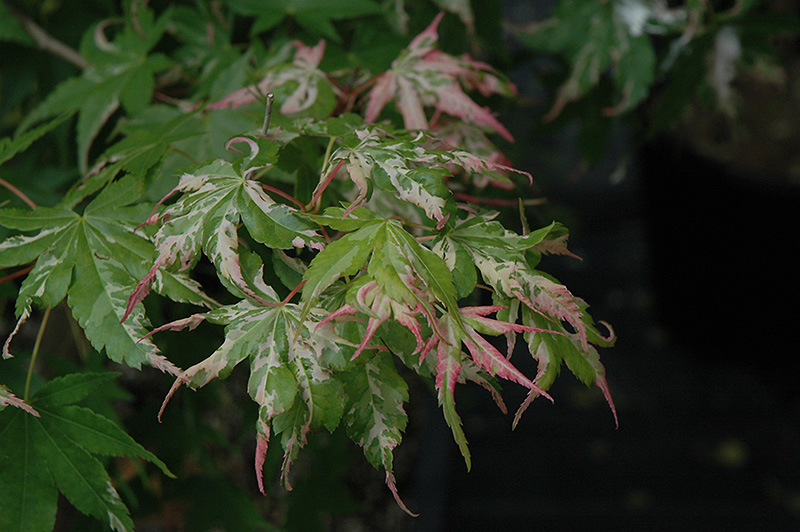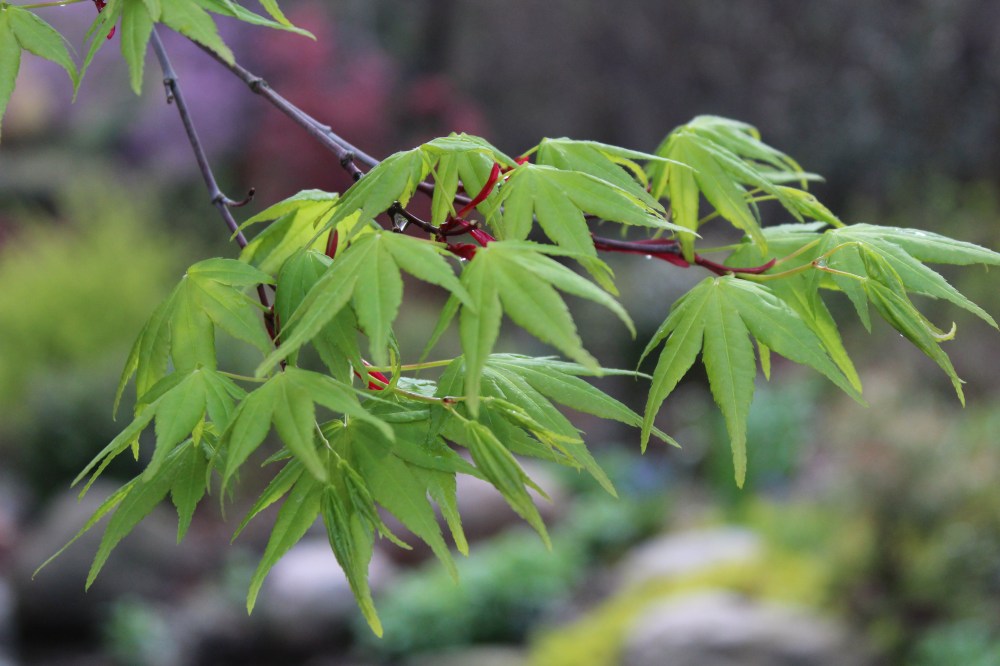I fear that a Japanese maple (Acer palmatum ‘Oridono Nishiki’) at the corner of the driveway is dying. In late August, all leaves have dropped, which is concerning, though some falling leaves are not too unusual in late summer. Tips of branches, far too tall to reach, are curled, telling me that this is not just premature leaf drop.
I suspect that large sections of bark that have split on the side that was once sheltered by two large hornbeams are the cause of the maple’s demise. The wounds were not discovered until the Japanese maple began to suffer, and then I figured it was too late to do anything.
But, if any of the garden’s Japanese maples had to go, this is the one I’d give up. It’s a constant disappointment, though I would not volunteer to be rid of any trees if I had my druthers. ‘Oridono Nishiki’ is a varigated leaf maple that stays mostly green, with colored new growth for a very short period and no other distinctive features. The garden will get along fine without it, and already I am envisioning this corner with no tree at all, or considering planting one of the small maples that have been growing in pots on the patios for a few years.

With twenty-nine years in this garden, several trees have been ruined by storms, or ice or snow, so this will not be the first to go. Certainly, it will not be the last, and usually the lost tree or shrub is not missed after a year or two. I expect I’ll get over the maple’s loss quickly
What don’t you like about this Japanese maple? I have Uzen Nishiki which is smaller. The leaves at the ends of branches have some pink and the variegation holds well.
Other maples have better color, longer. It’s not a bad maple, but I like others better.
I grew Japanese maples for many years, and I enjoyed growing them on the farm, but I would not grow them in my home garden. They really are not for everyone. I dislike how they have been a fad here for a long time, but they are not well suited to our chaparral climate. So many that I see n landscapes are in bad condition. Yet, people continue to grow them. I do happen to like them in some of the Japanese gardens in San Jose as well as the Hakone Garden in Saratoga; and they look great in the ‘right’ landscapes. However, my landscapes are not right for them.